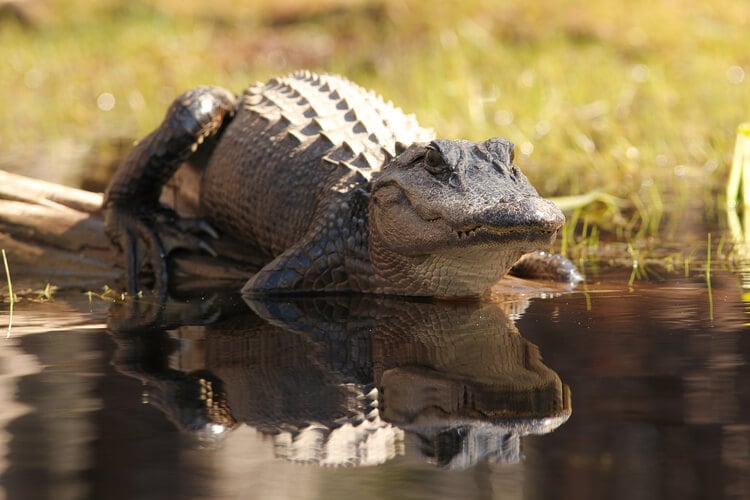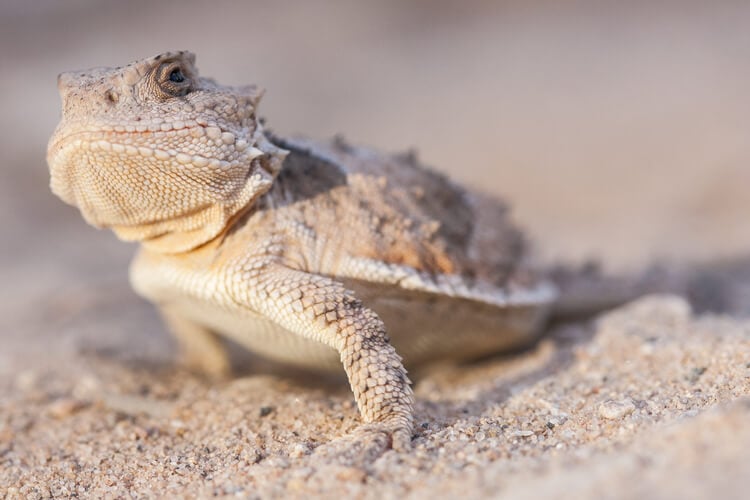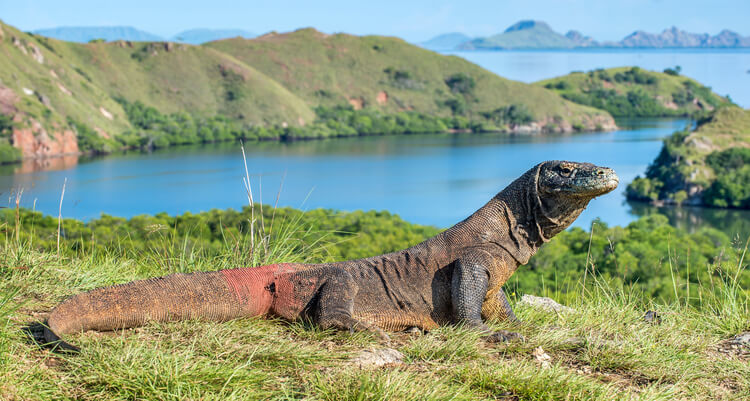Reptiles are some of the oldest animals on the planet, and what better time to celebrate these ancient animals than on Reptile Awareness Day? They’ve been roaming (or slithering) the Earth for far longer than we have, around 500 million years, in fact, so it makes sense that there you can see our fabulous scaly friends in almost any country. If you fancy a little lizard action on your next vacation, let out your inner herpetologist and join us for a look at some of the best vacation destinations for reptile lovers.
Reptiles in Florida, USA
Florida has got a lot going for it as a vacation destination. There are world-class theme parks for family fun, miles upon miles of glorious beaches, and lively cities for partying the night away. So when you think of Florida, you’d be forgiven for not immediately thinking of the reptiles that call the Sunshine State home. But once you get into it, there’s a surprising amount of them living (mostly) harmoniously alongside the Floridian people.
American alligators – Florida’s state reptile
The biggest and most famous reptile in Florida is the alligator. These infamous scaly citizens are found in great numbers in the Florida Everglades National Park, but also explore more urban territories. It’s not unusual for those sneaky gators to wander onto golf courses, bask in the sun next to a road, or even take a dip in someone’s private pool.
The good news is, alligators do not consider humans as prey, preferring a fishy diet and the occasional bird. They can however have a pretty snappy temper, so the best advice is to stay at least 50 feet away, and under no circumstances try to approach or pet them. It is also illegal to feed wild alligators because it conditions them to associate people with food. Aggression will increase during nesting season, from mid-April through May. Alligator moms will build nests during this time and are fiercely protective of their offspring. With a little kindness and consideration for these beautiful animals, you can enjoy seeing them roaming the rivers, wetlands, and greens of Florida.

Where to see alligators in Florida
If you’re wondering where you can see alligators in Florida, a better question is; where don’t you find alligators in Florida? The state is home to some 1.3 million gators (not bad for a species that was, until recently, almost extinct). The best place to see alligators in a safe environment is at one of Florida’s national parks. The aforementioned Everglades is the big one, the most famous and diverse in the state. Alligators in the Florida Everglades are easy to find on eco-friendly airboat tours and other excursions. There’s also the Walluka Springs State Park, south of Tallahassee, which has one the deepest and largest freshwater springs in the world. This is prime gator territory, and it’s easy to spot them from designated viewing platforms and organized boat tours.
A national or state park is also a great way to spot some of Florida’s other reptilian inhabitants. Alongside the alligators, there are also crocodiles in Florida’s waterways. At first glance, the two look similar, but you can tell them apart from the shape of their snout. Crocodiles have pointier, v-shaped noses, while alligators appear shorter and stubbier in the face. Gators prefer freshwater, whereas crocs tend to inhibit saltwater territories.
Types of snake in Florida
Florida is also home to 46 species of beautiful snakes. Most of Florida’s serpents are non-venomous, but there are 6 types that are considered dangerous. Venomous snakes in Florida are; the Eastern coral snake (easily identified by its bright black, yellow and red pattern), the cottonmouth, the Eastern diamondback rattlesnake, the pygmy rattlesnake, the canebrake, and the copperhead. For a detailed guide to what snakes are in Florida and how to identify them, check out the Florida Museum website.
What do I do if I encounter a wild snake in Florida?
The easiest way to ensure that you don’t get into a tangle with them is to give them space. They’re most likely to strike if startled, so don’t sneak up on snakes! Never pick one up, pet, or otherwise handle it. If you’re in doubt about whether a snake that you encounter is venomous or not, exercise caution and assume that it is.
The wet season, between April and October, is prime snake season, as these normally shy animals are forced out from their underground burrows by the rain. In warm weather, they’re generally more active first thing in the morning and at night.
If you are lucky enough to encounter one of Florida’s serpent residents in the wild, remember, snakes are far more afraid of humans than humans are of them. They will not hunt, chase or otherwise pursue you. Respect them, don’t give them a reason to bite, and they’ll leave you alone. If you are walking or hiking in areas with tall grass or other snake-friendly landscapes, wear sturdy boots, keep pets leashed, and don’t pick up anything with your bare hands. Most snakes will scraper when they sense the vibrations of your oncoming feet, but some, particularly pit vipers such as rattlesnakes, will freeze in place to avoid detection.
If you do get bitten, call 911 right away. Keep the affected area still and level, and do not try to capture the snake. If it’s safe to do so, try to get a picture of it to assist with treatment, but if not, remember details of what it looked like.

Where can I go to see snakes safely in Florida?
If you want to get to know Florida’s slithery inhabitants in a safe and ethical environment, head down to The Reptile Discovery Center in Deland. It’s home to snakes from all over the world and is one of the world’s top producers of antivenom, used to treat snake-bite victims. You can learn more about the snakes themselves, as well as the process used to ‘milk’ them for their venom. It’s a harmless process for snakes, which can save lives around the world.
Iguanas in Florida
Since the 1960s, the streets of Florida have been subject to an invasion. Parks, gardens, and greens have been overrun by green iguanas. These critters may be cute, but they are considered an absolute nuisance by Florida home and business owners. They eat plants and vegetation, laying waste to scrubland and shrubbery, fields, and flowers alike. Originally from Central and South America, they can be seen everywhere in Florida. While it’s delightful to see them stomping around the streets, it’s worth remembering that they are an invasive, damaging species, therefore they don’t get a lot of love from Florida residents!
Reptiles of Arizona, USA
In the dry, dusty desert landscape of Arizona, there are some very quirky reptile residents. The state is home to a whopping 107 species of native reptiles, including tortoises, lizards, and snakes. One of the strangest and most unique of these is the greater short-horned lizard. This little lizard looks pretty ordinary, with a round, stocky body and brownish-yellow coloring, but it has a nasty little party trick up its scaly sleeves. When threatened, it defends itself by shooting jets of blood from its eyes. This fascinating (and, if we’re honest, slightly disgusting) survival method has baffled scientists since it was discovered.
The greater short-horned lizard lives in Arizona’s deserts, including the beautiful Saguaro National Park. Other reptile inhabitants you could see on a trip to the park include desert tortoises, several species of snakes, and Arizona’s only venomous lizard, the Gila monster. Arizona is also home to a dedicated reptile sanctuary. The Phoenix Herpetological Society works with people to increase appreciation and education about reptiles, taking in surrendered pets and rescuing reptiles in trouble across the state. They run visits, workshops, and tours around the center, and is well worth a visit if you want to find out more about Arizona’s beautiful reptiles.

Komodo National Park in Indonesia
Indonesia is home to a reptilian superstar; the Komodo dragon. This ferocious, beautiful animal is the largest lizard on Earth, and unique to this region. They live in Komodo National Park, on Komodo Island in Indonesia. There are around 5000 dragons in Indonesia, the vast majority of them on Komodo Island. We recommend staying for at least one night to truly explore the best of this unique destination.
There is so much natural beauty on the island, including one of only 7 pink beaches in the world. There is also stunning marine life inhabiting coral reefs. But the real draw is, of course, the dragons. To see them, you need to go with a guide. These animals are big and they are dangerous, with a powerful, venomous bite. Attacks on people are rare, but not unheard of, so you must go with an expert who knows how to read the lizards.

How to visit Komodo National Park
The Komodo Islands are remote, and getting to them can be an adventure in itself! You might be wondering how to get to Komodo Island from Bali, or other popular Indonesian resorts. First, you need to book a domestic flight from Bali to Flores Island. You cannot fly directly to Komodo Island, and most tours depart from Labuan Bajo on the west coast of Flores. Flights from Bali to Flores take around 75 minutes and depart several times a day. Booking in advance means that you’ll get the cheapest fares and best choice of flight times. You’ll also need to book a tour to explore Komodo Island itself. You can choose from a great range of tours, including wildlife and dragon focussed excursions, boat trips with diving in Indonesia’s stunning reefs, or all-inclusive trips from Bali.
Meeting Mexico’s reptiles
Mexico is a wonderland for reptile lovers. With 807 species of native reptilians, the country is second only to Australia in terms of reptile biodiversity. Lizards, snakes, crocodiles, turtles, and tortoises are spread across the entire country. There is a particularly large assortment in the Yucatan Peninsula, the region of popular tourist spots such as Cancun and Tulum. Mexico boasts some of the most beautiful reptiles on Earth. Colorful anoles, adorable Michoacán leaf-toed geckos, pretty milk snakes, and Mexican garter snakes are just a few examples. Snakes in Mexico come in all shapes and sizes, on land and water. Many are harmless and docile, but there are some venomous species, so, as always, exercise caution and never handle them.

Turtles – Mexico’s ocean reptiles
The national reptile of Mexico is the green sea turtle (also known as black turtles on the Pacific Coast). X’Cacel and Sian Ka’an on the Yucatan Peninsula and Colola Beach on the Pacific coast are important nesting beaches for the turtles. Late August through to October is the best time to see the turtles on land. Turtle protection sanctuaries, such as the Sea Turtle Conservancy, are the best places to go to watch and learn about these beautiful, enigmatic creatures. You can also take a dive tour to get up close and personal with turtles in their favorite environment; the warm waters around the Mexican coast.
Reptiles of the Caribbean
The Caribbean is a group of paradise islands, not just for humans, but for wildlife too. There are several species endemic to the Caribbean. The lush, verdant rainforest of the region provides opportunities to see them. It’s not easy to come across many reptile species in the Caribbean, particularly snakes. The introduction of snake-snacking species such as mongooses has reduced the number of wild snakes dramatically.
The Antiguan racer, for example, is one of the rarest snakes in the world. It inhabits only 3 small islands in the area. The Caribbean is also home to the smallest snake on Earth, the Barbados thread snake. This tiny serpent is the size of a noodle and looks more like a worm than a snake. Over in Jamaica, there’s the beautiful split color Jamaican boa, painted half yellow, half blue. Snakes in Jamaica aren’t numerous, and none of the 6 known species are venomous. As for snakes in the Dominican Republic, you might see some beautiful tree dwellers, known as Uromacers. Due to the decline in the number of wild snakes in the Caribbean, it’s sadly unlikely that you’ll encounter them. If your vacation would be incomplete without a serpent sighting, try contacting an eco-tour company or a conservation foundation.

Caribbean lizards
You will probably have more luck finding lizards in the Caribbean. Mostly, lizards in the region fall into 2 families; iguanas and geckos. Iguanas can be seen chilling out in the sun near beaches, boardwalks, and anywhere else that takes their fancy, really. They are inquisitive, independent, and very laid back, fine ambassadors of the relaxed Caribbean lifestyle that we all want to attain on vacation! Geckos, on the other hand, are scrappy, sticky-toed little lizards, who can often be found clinging to walls and ceilings or scurrying around at high speeds. They are, in the main, brightly colored and harmless, preferring to keep a beady eye on things rather than getting involved. They get their name from a quirky vocalization that they make, a cute little chirp that sounds a lot like the word ‘gecko.’ They can be found all over the Caribbean.





